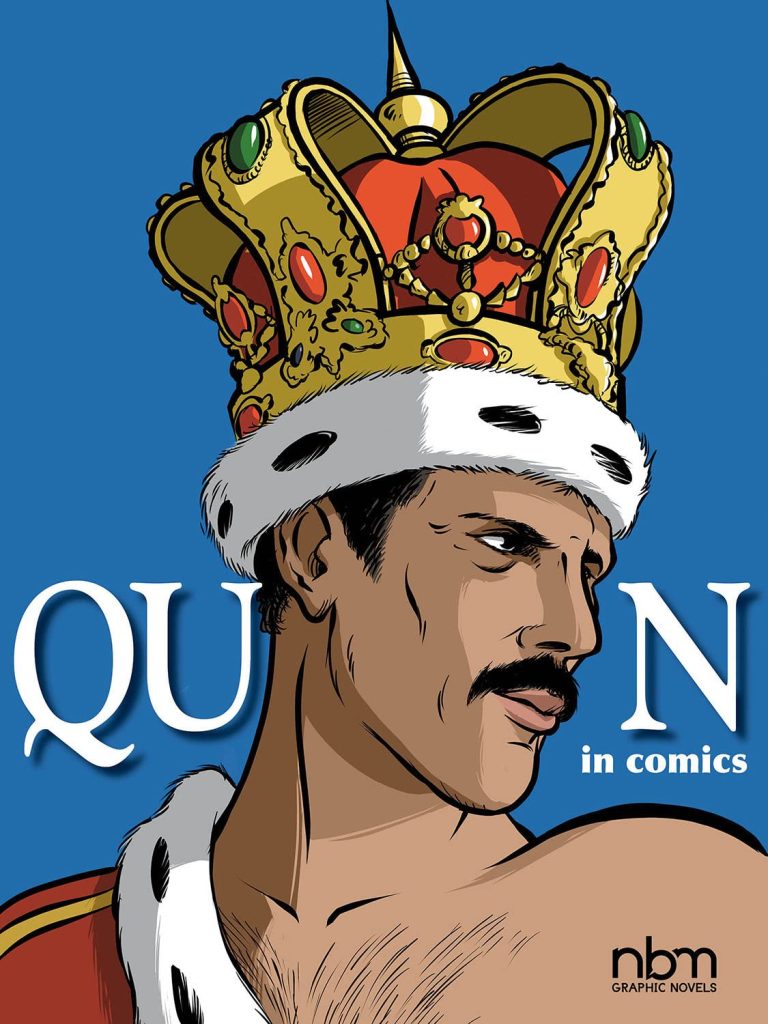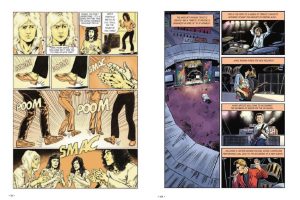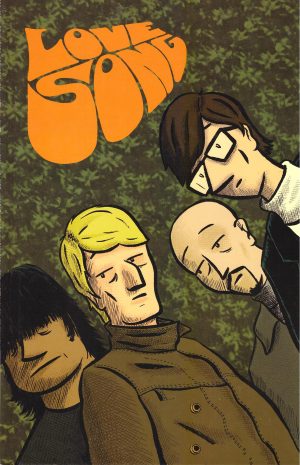Review by Frank Plowright
With five previous volumes spotlighting the careers of best-selling music artists, Queen’s entry into the canon joins a consistently successfully series, with Emmanuel Marie writing the brief comic interludes for seventeen different artists. This time only Samuel Figuiére (sample art left) and Dario Formisoni (sample right) are allocated more than the single chapter.
Due to the relatively recent Bohemian Rhapsody film perhaps the lesser known aspects of Queen’s career are now more familiar to a wider audience, but Marie begins far earlier with the Zanzibar childhood of Farrokh Bulsara, the boy who would become Freddie Mercury. He’s very much the focus of the earlier chapters, leaving Sophie Blitman’s text pieces to provide the backgrounds of Queen’s other members, which some might feel is unbalanced.
Beyond that, Queen in Comics shares the same strengths and weaknesses as the earlier volumes. Dialogue remains frustratingly substandard, and this has to be laid at the door of the uncredited translator. The conversations are so frequently banal. If that’s a fault of the original French dialogue then the translator should improve it while keeping the gist, and if not, NBM should supply something more natural from the literal translations. Surely the profit margins aren’t so slim as to preclude this.
As ever, the art ranges from out and out cartooning to almost figurative realism. It’s notable that most artists tend to assume caricaturing the lead singer is enough, and the remainder of the band are surprisingly anonymous, although Antonio Campofredano bucks that trend with good likenesses of the younger band. Mercury would love the artist’s name. That apart, Lauriane Rérole’s art is the most distinctive, drawing the band as if in a cartoon show as they’re kitted out for the early 1970s.
Marie’s research is good, his method of quoting interviews in hindsight interesting, and he makes informative use of footnotes to clarify what might be misinterpreted. He frequently manages to build sequences around snippets that people only familiar with Queen’s music and videos might not know. How famous songs were composed is shown and a revealing scene shows the band recording their first album via taking up unused studio time of other artists, David Bowie among them. There’s a sweet meeting with Michael Jackson, a surprisingly tense recording of Under Pressure with Bowie, and charmingly one tour is related via the reminiscences of a roadie.
Queen in Comics is imaginatively told and well drawn, but NBM really need to sort the dialogue out for their next volume.





